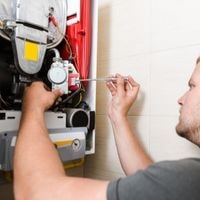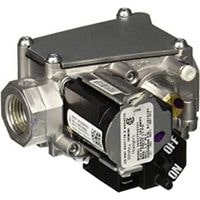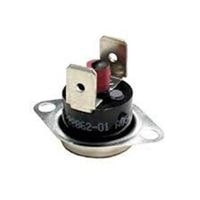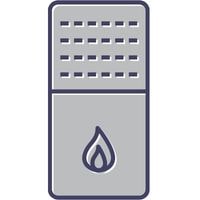Goodman Furnace Troubleshooting. You can better understand the operation of your furnace with Goodman furnace troubleshooting. It is often possible for the homeowner to diagnose and resolve 80% of Goodman furnace problems at home, saving hundreds of dollars in service calls.
These problems typically result from worn-out parts that must be replaced. In most cases, you can find the part at your local hardware store and install it yourself in a matter of minutes. As opposed to buying an entirely new furnace, repair work is usually less expensive and more convenient.
Furthermore, it allows you to gain a deeper understanding of how your system works so that you won’t have to call a professional whenever something goes wrong in the future.
Goodman Furnace Troubleshooting
If your Goodman furnace won’t ignite, it could be caused by a major obstruction in the air intake piping. Examine your home’s pipes to make sure they aren’t blocked with debris and/or other materials such as dust or items that have accidentally fallen down the pipe. If your inspection finds them to be clean, it might be time to call an HVAC specialist!
Water leaking
Typically, a leaking Goodman furnace is caused by a cracked condensate pipe, a clogged drain line, a defective condensate pump, or a cracked heat exchanger.
In most cases, a clogged drain line must be unclogged in order to allow a clear flow of condensate. Condensate pipes may need to be replaced if they are cracked in your Goodman furnace.
You may need to remove the damaged part and replace it with couplings, or you may need to replace the whole pipe. Use pipe cement to fix the loose joint if the problem revolved around a loose joint.
Solenoid Valve Malfunction
A solenoid valve is an automatic gas regulator for your furnace that is connected to your thermostat so that it can turn the gas supply on and off whenever the temperature in your house needs to be controlled. For example, if the temperature at home drops slightly below a certain point, you’ll need more temperature control so that you’re not getting cold.
To increase the thermostat setting in this situation, your solenoid valve will be operated so as to open up a gas flow that is temporarily disconnected when it receives instructions from your thermostat.
If this part malfunctions while in use, it can cause permanent damage or harm especially if something catches on fire. Testing and replacing this valve is easier said than done however because there are several electrical connections wires that must be carefully monitored during testing.
Clean Flame Sensor
Most furnaces today have a flame sensor, not a pilot light. A flame sensor is triggered by a lit pilot light when the power button or ignition key is pushed.
A dirty or blocked flame sensor will therefore make the furnace shut off when it should stay on. Read more details in our section on “Goodman Furnace Won’t Stay Lit/Keeps Shutting Off” above to learn how to clean your burner’s flame sensor properly.
Limit Switch For Flame Rollout
The flame rollout switch is one of the most important elements in your furnace. It is what lights and keeps the burners on during ignition and if there were ever a malfunction it would go off and make sure that your furnace wouldn’t ignite.
You need to make sure that you are testing all of the elements correctly in order to find out which one needs replacement.
One way you can test a flame rollout switch is by using a multimeter but usually replacing it entirely is sufficient enough as long as you know that it’s not an issue with poor airflow or an exhaust vent with some sort of blockage.
Testing for blockages in both heating ventilators and properly sized exhaust vents is essential for the proper performance of your heating system.
Gas Stuck Valve
If a gas valve on a furnace won’t open, it might be stuck closed. In this case, there is no gas flowing to your furnace. It could be caused by internal problems in the gas valve, if the gas valve wires are cracked or frayed, or if the gas valve coil malfunctioned.
During furnace troubleshooting, you should absolutely avoid hitting or banging your own gas valve with a wrench – even if other advice tells you to do just that to solve your problem.
You may find that if you do this and then your furnace has more problems, for example, an explosion or fire occurs from faulty parts such as these, then your insurance company may deny any kind of compensation if they discover that you tampered with the factory-installed components.
Blower Motor Problem
Blower motors blow air through filters and into your home’s heating system. Make sure the motor is receiving power. If power is getting to the blower motor but it’s not spinning, it might be burned out.
Check the venting panel to see if that is true (which you should have done when you first noticed that your house was not keeping warm during extreme temperatures). There may be a problem with the blower fan not turning, in which case you must replace the motor.
If, however, there is nothing wrong with the way your blower fan is spinning when you open up the venting panel, you should investigate further why your home hasn’t been as warm as it should because, as an entrepreneur, you want to troubleshoot everything completely.
Wall Thermostat Malfunctioning
The wall thermostat is a mechanism that controls the temperature settings within an area. If the contact in the wall thermostat that controls the blower motor sticks closed, an infinite amount of voltage is sent to it.
Which will cause the motor to run continuously. To determine if the thermostat has failed, use a multimeter to test its continuity. If the thermostat shows continuity between and when it is in off position then it needs to be replaced.
Goodman Furnace Troubleshooting
Related Guides
